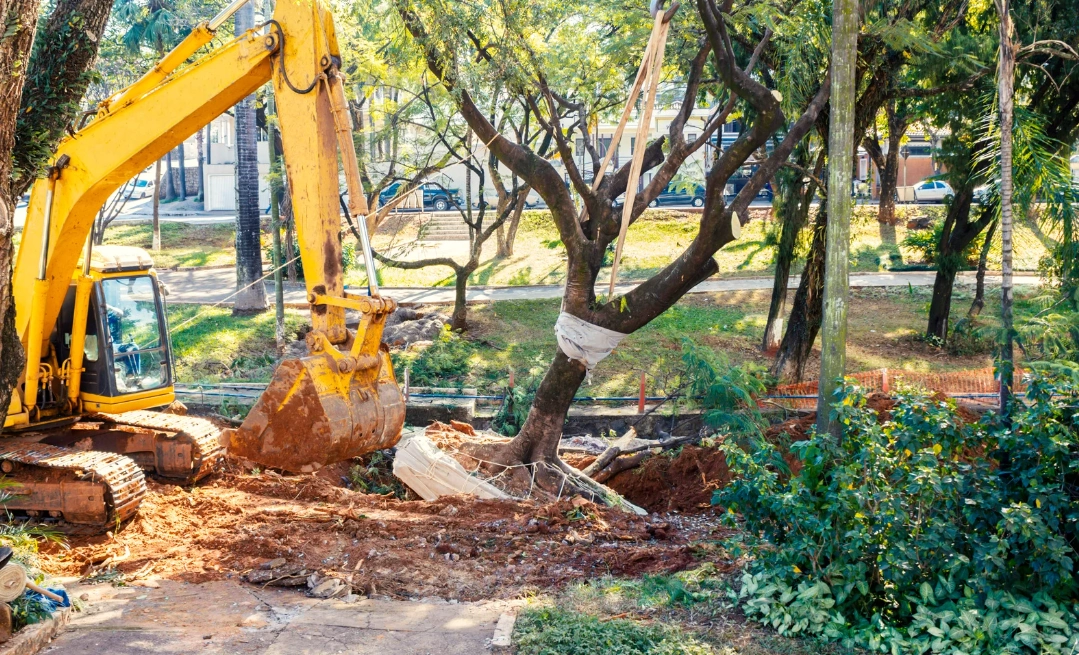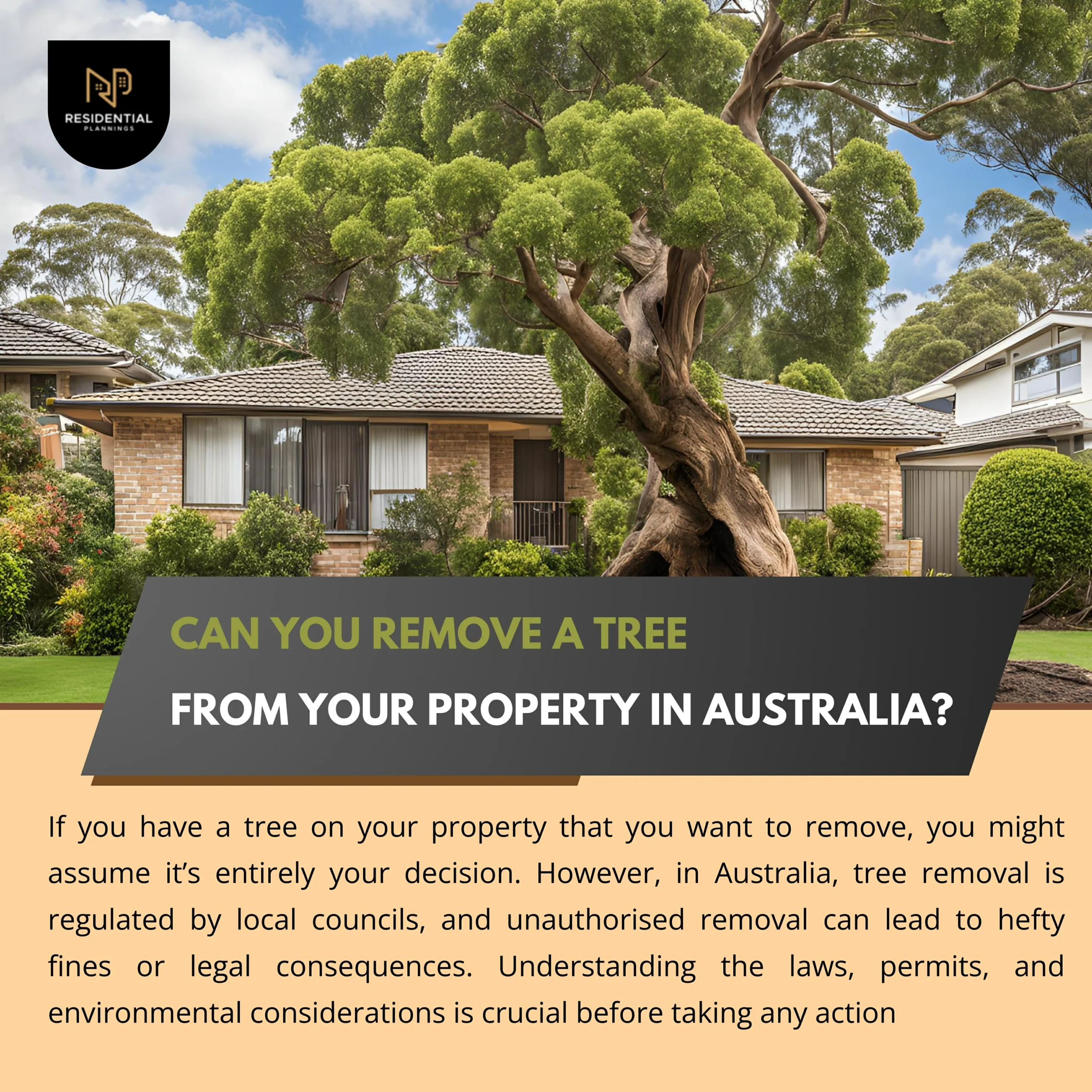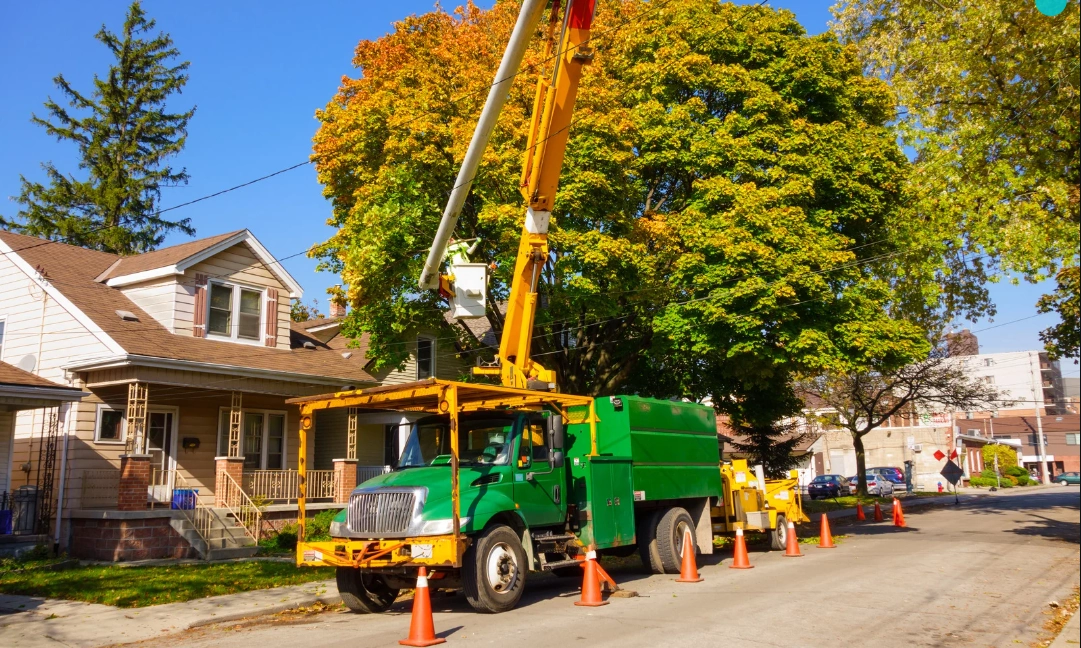Can You Remove a Tree?
If you have a tree on your property that you want to remove, you might assume it’s entirely your decision. However, in Australia, tree removal is regulated by local councils, and unauthorised removal can lead to hefty fines or legal consequences. Understanding the laws, permits, and environmental considerations is crucial before taking any action.
This guide explores when you can remove a tree, the legal requirements involved, and the best way to proceed while complying with council regulations.

Common Reasons for Tree Removal
Tree removal is often necessary for various reasons, including:
1. Dead or Diseased Trees
A dead or diseased tree can pose significant safety risks. Falling branches or complete tree failure may cause injury or damage to nearby properties. Additionally, diseased trees can spread infections to other vegetation.
2. Structural Instability
Trees that lean dangerously or have weak root systems pose a hazard. If a tree shows signs of instability, removing it may be the safest option to prevent property damage or personal injury.
3. Storm or Environmental Damage
Trees that have suffered severe damage from storms, strong winds, or lightning strikes may become structurally weak and require removal for safety reasons.
4. Encroachment on Property or Utilities
Tree roots can invade underground pipes, foundations, or driveways, leading to costly repairs. If a tree is interfering with essential infrastructure, removal may be necessary.
5. Obstruction of Views or Sunlight
Overgrown trees can block natural sunlight, hinder property aesthetics, or obstruct scenic views. Removing these trees can enhance your property’s value and usability.
6. Landscaping and Renovation Projects
In some cases, tree removal is part of a larger landscaping redesign, allowing better use of space for gardens, patios, or extensions.
When Are You Allowed to Remove a Tree?
Tree removal is permitted under specific conditions. Here are the key situations where it may be allowed:
The tree is dead, diseased, or poses a safety hazard.
The tree is causing structural damage to buildings, driveways, or underground utilities.
The tree is interfering with approved construction or renovation projects.
The tree has suffered irreparable storm damage.
The removal falls under the NSW 10/50 Vegetation Clearing Scheme, applicable in bushfire-prone areas.
Even in these cases, you might still require a permit from your local council.
When Is Tree Removal Not Allowed?
There are strict restrictions on removing trees under the following circumstances:
1. Protected Trees
Many Australian councils enforce Tree Preservation Orders (TPOs), which protect trees based on size, species, and environmental significance. Removing a protected tree without permission can result in legal action.
2. Endangered or Heritage-Listed Trees
Some trees are protected due to their ecological, cultural, or historical importance. Cutting down such trees without approval can lead to fines and legal repercussions.
3. Trees in Conservation or Protected Zones
If a tree is located in a conservation area or supports local wildlife, it may be protected under environmental preservation laws.
How to Legally Remove a Tree from Your Property
If you need to remove a tree, follow these steps to ensure compliance:
1. Check Local Council Regulations
Visit your council’s website or contact their planning department to understand local tree removal laws.
2. Apply for a Tree Removal Permit
Many councils require a permit before you can remove a tree. You may need to provide a valid reason for removal and, in some cases, an assessment from a certified arborist.
3. Verify 10/50 Vegetation Clearing Entitlement
If you live in a bushfire-prone area, you may be able to remove certain trees without approval under the 10/50 Vegetation Clearing Scheme.
4. Consult a Qualified Arborist
A professional arborist can assess the health and stability of a tree, determine if removal is necessary, and provide expert guidance on obtaining permits.
5. Hire Licensed Tree Removal Professionals
If the council grants permission, it’s best to hire qualified professionals to remove the tree safely and legally.
Final Thoughts
Tree removal in Australia is subject to strict regulations to protect the environment and community safety. Before taking any action, check local council laws, obtain necessary permits, and consult experts to ensure compliance.
If you’re unsure whether you can remove a tree from your property, consult with professional arborists or local council authorities. This will help you avoid legal issues while maintaining the safety and aesthetics of your landscape.
Contact us now WhatsApp





